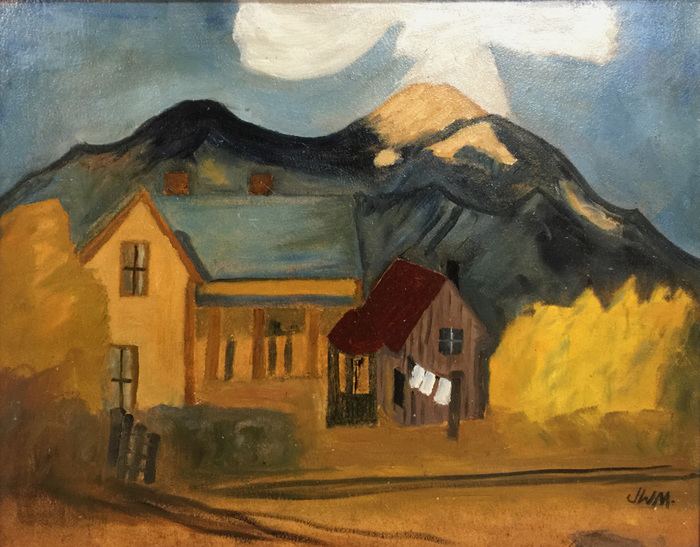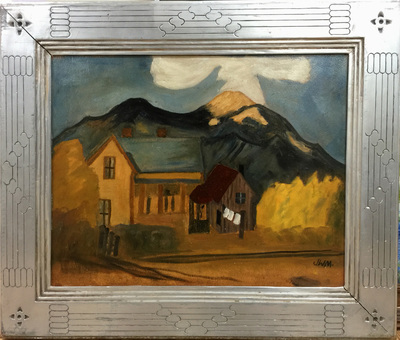Juan W. Mirabal "Eagle Cloud Over Taos Mountain"
-
- Juan W. Mirabal
- (1903 -1970)
- Taos/Pueblo, NM. Artist
- Image Size: 16 x 20
- Frame Size: 22.5 x 26.5
- Medium: Oil on Board
- 1930
- "Eagle Cloud Over Taos Mountain"
- Contact for Price & Info
- View All By This Artist
Details
Mex MXX
-
Biography
Juan W. Mirabal (1903 -1970)
Juan Mirabal (1903-1970) remains lesser known of the Taos Indian artists. It is not certain whether he worked as a model for any of the Taos Society of Artist members or if he ever attended the Santa Fe Indian School. In the late 1940s, he studied for a time with the Taos modernist painter Louis Ribak who ran an art school for a few years after World War II. During that period, the Taos Valley News ran a photograph of Mirabal with some other students. This was unusual for, unlike Martinez and Lujan, he seems to have pursued his career in a less public way. There is no mention of him painting on the plaza in the Village nor did he open a shop there.
Visitors from outside the Pueblo did, however, come to see him and some of them at least must have purchased his paintings. He differed from the other two painters in this exhibition in several respects. The most surprising thing he did was to depict ceremonial dances at the Pueblo. Before this time, no Taos Pueblo artist created such realistic pictures for a non-tribal audience. These paintings are highly evocative of the power and beauty represented by the dances. They are also interesting for their modernist flavor. From the 1930s, Mirabal's work shows a decidedly Cubist influence, which was probably unique among Southwest Indian painters of the time.
He most likely learned about modernist painting from Marjorie Eaten, a painter of his own age who lived in Taos in the late 1920s and early 1930s. In addition to being well educated in European Modernism, Eaten was enamored of Mirabal. She later became an assistant to Diego Rivera from whom she learned the art of true fresco, painting with dissolved pigment on wet plaster. She may have taught Mirabal the technique because in 1950 he painted a large mural on the portal of a residence in Ranchos de Taos, now the Adobe & Pines Inn Bed & Breakfast. In whatever medium, it is Mirabal's inherent design and color sense that make his paintings come alive.

